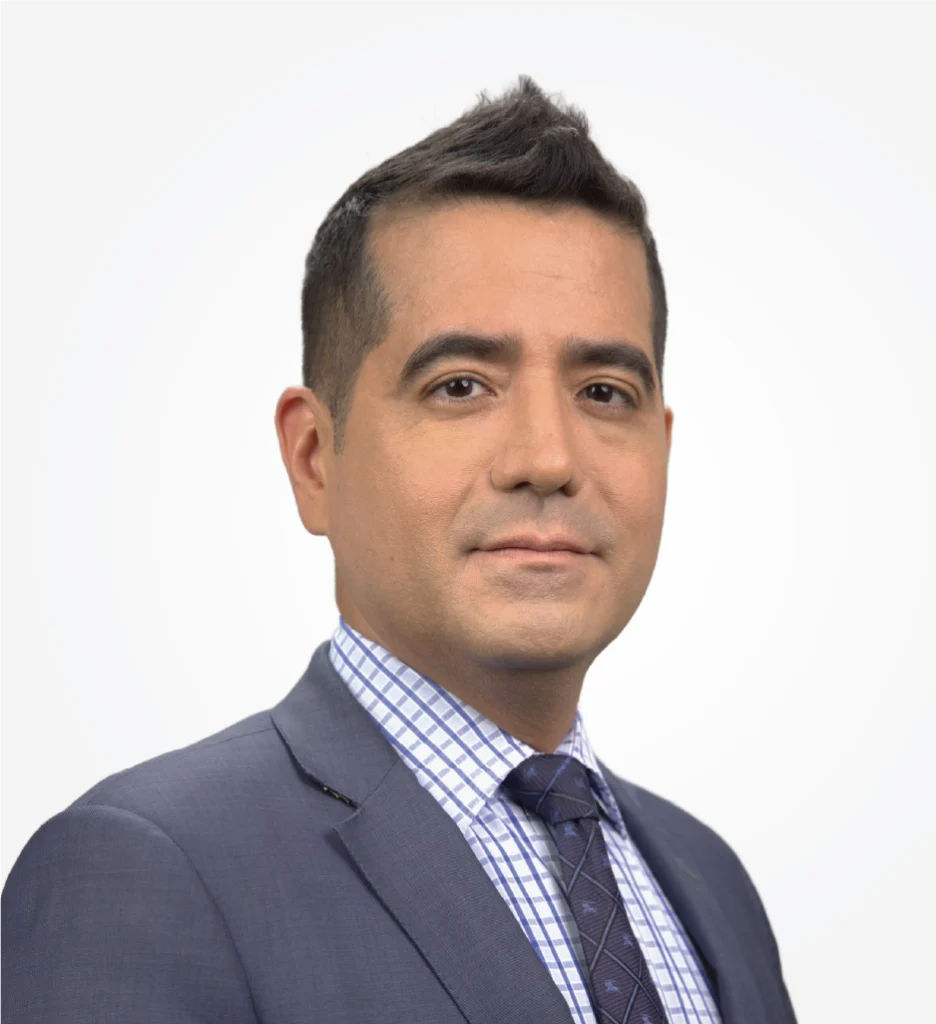When a medical provider's negligence or intentional act of harm causes injuries or the death of a loved one, the necessary next steps can become overwhelming quickly. How do you prove medical negligence after a healthcare professional has betrayed your trust and caused injury or wrongful death? Contact a Fairfax medical malpractice lawyer to discuss the merits of your medical negligence claim or lawsuit.
They will compassionately listen while gathering the information they need to determine a strategy to secure financial compensation for your injuries, damages, or wrongful death. Schedule a free case evaluation.
What Is Medical Negligence?
Medical negligence occurs when healthcare providers fail to follow the recognized standard of care. It involves failing to take reasonable care to prevent injuries, neglecting to exercise the appropriate caution or skill, and causing preventable harm to a patient. A medical professional owes specific duties to their patient, and a breach of these duties gives a cause of action for negligence against the healthcare provider.
What Is the Difference Between Medical Negligence and Malpractice?
The primary difference between medical negligence and malpractice is the presence of intent or awareness. Medical negligence involves a healthcare provider's actions or omissions failing to meet the standard of care. It is an unintentional error, causing accidental harm. For example, when a surgeon inadvertently knicks a blood vessel while operating on a patient.
Medical malpractice is a type of medical negligence occurring when a healthcare professional is aware of the potential consequences or dangers before making a medical error. For example, when a surgeon rushes to operate without performing necessary tests, leading to severe injury. Malpractice generally happens when medical professionals fail to follow proper protocol or guidelines. It also generally leads to higher settlements because of injury severity and extent of damages.
Types of Medical Negligence
Medical negligence is an umbrella term for various errors occurring in healthcare settings. It can occur in hospitals, urgent care, primary care, rehabilitation, and specialty care facilities. Several types of medical negligence exist and include the following:

- Misdiagnosis: A diagnostic error that occurs when a medical professional incorrectly diagnoses a patient's symptoms or conditions. It often leads to delayed care, inappropriate medical treatments, and wrongful death.
- Delayed or Failure to Diagnose: A healthcare provider's failure to diagnose a patient's condition within a reasonable time. Delayed diagnosis can result in a worsening of symptoms or injuries, more aggressive treatment, unnecessary pain and suffering, long-term consequences, and a shortened life expectancy or reduced chance of survival.
- Failure to Treat: When a medical professional correctly diagnoses a patient's condition or injuries but fails to order proper recovery treatment.
- Surgical Errors: When a surgeon fails to adhere to the standard of care, causing serious harm or injury. Common surgical errors include using non-sterile instruments, performing the wrong procedures, operating on the wrong patient, or leaving equipment inside a patient.
- Birth Injuries: Medical negligence occurring during the birthing process causes birth injuries that may require months or years of recovery. These birth injuries include swelling or bruising of the baby's head, bleeding occurring under the skull bone, facial nerve injury, and clavicle fractures.
- Anesthesia Errors: When anesthesia is not appropriately provided, errors can occur, including insufficient anesthesia, improper intubation, inadequate monitoring of patient and vitals, heart attack, brain damage, and death.
- Medication Errors: Medication dispensing errors are the most common cause of medical negligence and are preventable causes of patient injury. These errors generally involve administering the wrong medication or dose or giving medications to the wrong patient.
This is not an exhaustive list of everything that constitutes medical negligence or malpractice. Ask an attorney to clarify your circumstances during your initial consultation. If you are a victim of medical negligence, it is imperative that you speak to a medical malpractice lawyer immediately. You'll want to exercise your legal right to financial compensation.
Establishing the Elements Needed to Prove Medical Negligence
A central part of your insurance claim or lawsuit is proving the necessary elements of negligence. These elements include a duty of care, breach of duty, causation, and damages. For medical negligence, that looks like the following:
- Duty of Care: The healthcare provider has a duty to provide safe care for their patient. Also, it involves establishing a doctor-patient relationship.
- Breach of Duty: The medical professional failed to meet the standard of care expected of a reasonable healthcare provider in a similar situation.
- Causation: The breach of duty is directly responsible for the patient's injuries.
- Damages: The breach of duty caused harm or injury and actual damages, such as medical bills, lost income, and pain and suffering.
Medical negligence is often difficult to prove, making the need for an experienced attorney relevant. Medical malpractice lawyers prove the elements of medical negligence with the evidence present in your case.
Evidence You Need to Prove Medical Negligence
How do you prove medical negligence without evidence? You can’t. Having solid evidence is essential for securing compensation for your claim. Evidence you need to prove medical negligence includes detailed medical records, expert testimony, healthcare bills, documentation of income losses, and your detailed pain and suffering journal.
Detailed Medical Records
Detailed medical records are a significant part of your medical negligence case. They document medical diagnosis, symptoms, treatment, and injury recovery. Your medical records provide insight into whether you were given enough information for informed consent. They contain physician notes about pain, pain management, and other injury symptoms pertinent to proving injuries.
Expert Testimony
Expert testimony is invaluable for proving negligence in your medical malpractice case. Attorneys work with a network of healthcare professionals who review medical records, analyze test and imaging results, provide insight on medical negligence in your chart, and provide expert testimony that validates a need for financial compensation.
Healthcare Bills
Healthcare bills are a significant part of your economic damages in a medical negligence claim. Any medical treatments received are recoverable damages when filing your claim or lawsuit and include bills, such as:

- Hospitalizations
- Surgeries and post-operative care
- Primary physician evaluations and follow-up care
- Pain management
- Physical therapy
- Chiropractic adjustments
- Massage therapy
- Rehabilitation (speech and language, occupational, and vocational therapies)
Organize all healthcare bills so an attorney can add them when calculating economic damages. You should also keep receipts for all out-of-pocket healthcare-related expenses, such as copays for office visits and pharmaceuticals.
Documentation of Income Losses
If you had to miss work due to injuries from medical negligence, you must provide proof of your lost earnings. Depending on the severity of your injuries, income losses can range from recovering lost income to determining a diminished or lost earning capacity for disability. Documentation includes pay stubs, employer wage loss statements, profit and loss statements (self-employed individuals), bank statements, and tax returns.
Documentation of Pain and Suffering
How do you prove medical negligence—pain and suffering damages? Pain and suffering are your intangible or non-economic damages. They don't come with quantifiable numbers, making them considerably more challenging to prove.
Proper documentation helps medical malpractice attorneys determine a value for them when calculating damages for your claim, usually based on the total of your economic losses. You can prove pain and suffering with the following:
- Pictures and Video: Photos immediately following injuries and video footage of how the injuries impact your daily life can help establish pain and suffering and decreased quality of life. Some injured parties opt to keep video diaries of daily limitations or restrictions, such as difficulty eating, dressing, bending, or lifting.
- Witness Statements: Testimony from trusted family, friends, and colleagues, speaking to how much pain you are in or how your injuries impact your daily life, is viable for proving these damages.
- Pain Journal: Your pain journal is critical and requires consistently dated entries detailing your pain and other injury symptoms. Your journal should include details about pain levels, location, duration, frequency, and type. It should also document sleep disturbances and psychological trauma, such as post-traumatic stress disorder (PTSD). Finally, detail how your injuries limit or restrict daily tasks and work-related duties.
Another thing you may consider documenting in your journal is your treatment compliance. Include details on medical treatments, surgeries, mental health therapy, and rehabilitation. You should also document your travel time and expenses to and from your appointments, as those are additional losses and damages.
How a Medical Malpractice Lawyer Helps With Medical Negligence
An injured party's top priority should be focusing on recovery. They do not need to deal with pressure and harassment from insurance companies while attempting to figure out the legal system, deadlines, and processes. Let an experienced medical malpractice attorney navigate your insurance claim or lawsuit. They help prove medical negligence and a need for compensation by collecting evidence, valuing case damages, negotiating settlements, and representing clients in court (if necessary).
Evidence Collection
You are responsible for providing some evidence, such as pay stubs and pain journals. However, once you retain a medical malpractice lawyer, they will collect, preserve, and analyze the evidence in your case. That means interviewing witnesses and gathering statements from trusted people who will write favorable accountings on your behalf. It also involves interviewing medical professional witnesses who were present at the time.
Case Valuation of Damages
Your medical negligence claim may include substantial compensation depending on the severity of your injuries and subsequent damages. Your lawyer will calculate your economic damages and determine non-economic damages when valuing your case, such as:
- Healthcare Costs: All healthcare-related expenses, including emergency services, doctor visits, medical devices, labs and imaging, physical therapy, massage, rehabilitation, and prescription drug costs.
- Disability Damages: Compensation for home and transportation modifications to accommodate disability and for disabilities, such as spinal cord injuries, paralysis, traumatic brain injuries (TBIs), amputation, vision and hearing impairments, and mental health.
- Lost Earnings: All income losses due to missing work because of injuries, such as salary, commissions, health benefits, retirement benefits, and diminished earning capacity or future earnings.
- Household Services: When injuries render you unable to perform daily tasks, you may require the help of household services. These services include cleaning, laundry, cooking, childcare, and grounds maintenance. You may also recover expenses for food and pharmacy delivery.
- Non-Economic Damages: Pain and suffering include acute and chronic pain conditions, psychological trauma, sleep loss, disability, disfigurement, humiliation, limited ability to perform daily tasks, decreased quality of life, and loss of companionship and society.
Wrongful death is the most devastating injury resulting from medical negligence. It leaves grieving families scrambling for answers, finances for final arrangements, and legal assistance for holding at-fault parties accountable.
Wrongful death has individual damages—you can file a claim or lawsuit to recover. These damages include funeral and burial costs, final healthcare expenses, pain and suffering of the decedent before their passing, pain and suffering of the claimant, loss of financial support, loss of household services, loss of guidance, and loss of consortium (for surviving spouses).
Negotiation of Settlement
Medical malpractice attorneys are skilled negotiators who confidently demand reasonable compensation for injuries and damages. Typically, insurers start by countering demand letters with lowball offers. It serves as a starting point for negotiations.
Experienced lawyers know how to negotiate for what's fair and won't accept anything less. They will discuss all settlement offers with you. While they will advise on what they would anticipate or do next, you get to make the final decision to reject or accept a settlement offer.
Representation in Court

If your medical negligence claim requires litigation, your malpractice lawyer will represent your case in court. The process involves exchanging interrogatories and depositions, preparing witnesses, and preparing evidence for presentation to a judge and jury.
During this time, they will continue to negotiate with liable insurance companies. Insurers and attorneys want to avoid lawsuits because they are costly and time-consuming. Most medical negligence cases are settled without litigation.
Consult a Medical Malpractice Lawyer
Medical negligence and malpractice cases have many complexities that make them nearly impossible for legally unrepresented victims to navigate. You need the assistance of an experienced Fairfax personal injury attorney. Schedule a free case evaluation to strategize a plan to secure financial compensation.
